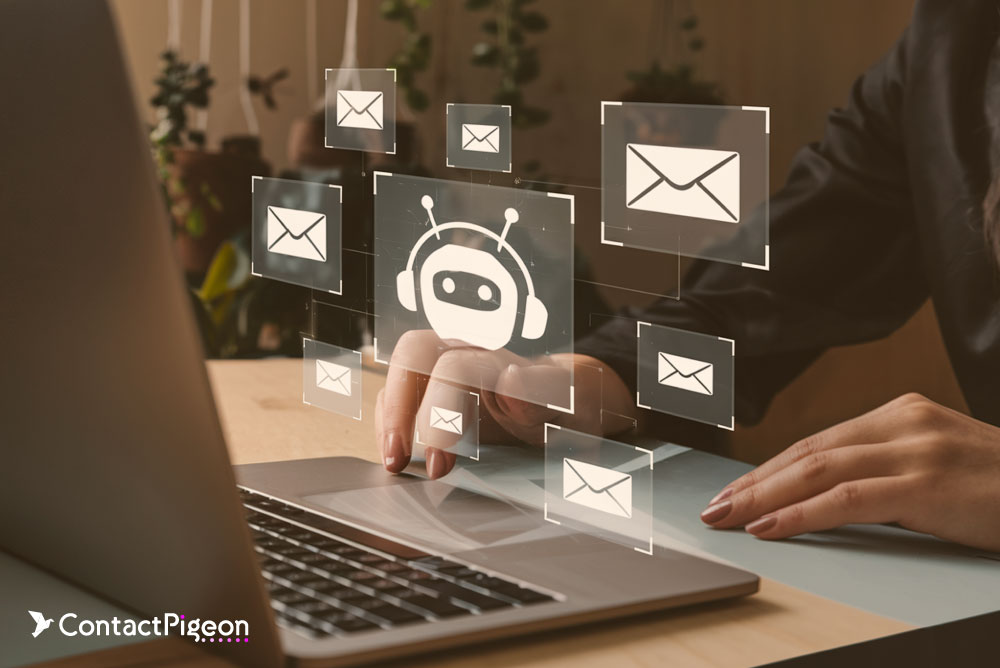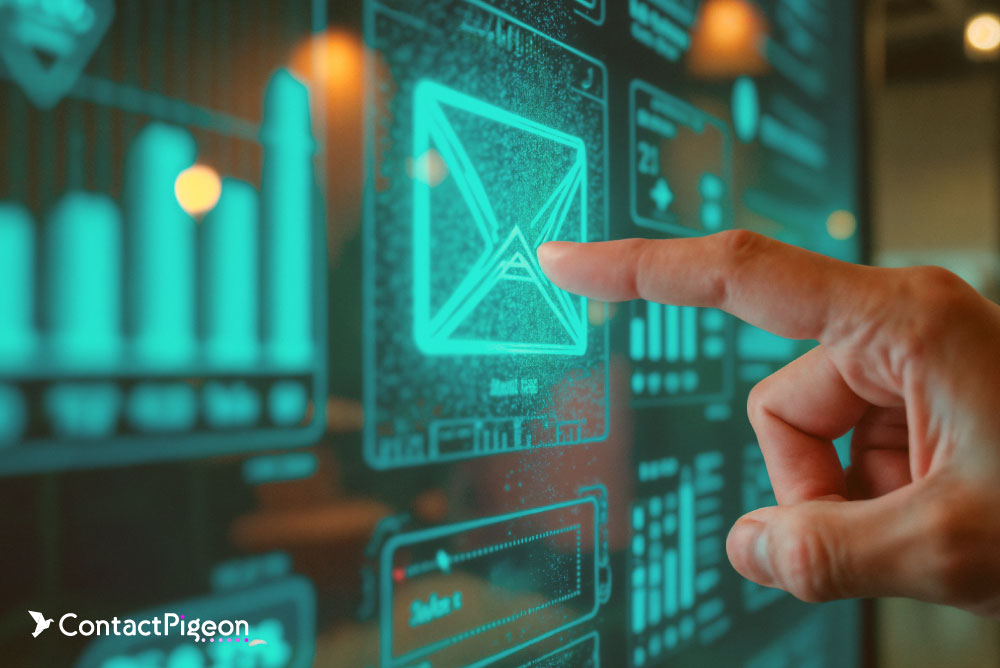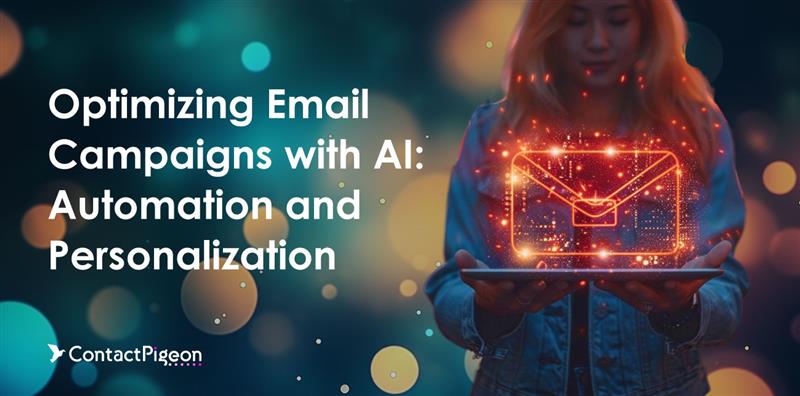Email marketing has evolved far beyond its roots as a simple broadcast channel. In omnichannel retail, it now serves as a sophisticated, data-rich tool that requires precision, contextual relevance, and perfectly timed execution. With customer journeys spanning physical stores, eCommerce platforms, apps, and social media, delivering impactful messages at scale has become increasingly complex. That’s where AI in email marketing is revolutionizing the game.
Retailers are turning to artificial intelligence to cut through the noise, unlock behavioral insights, and personalize every touchpoint. From automation logic that reacts to real-time customer signals to hyper-relevant content that adjusts with each engagement, AI is optimizing and redefining email campaigns. According to McKinsey, personalized AI-powered email campaigns can achieve 5–8x higher ROI than traditional batch-and-blast strategies.
No time to spare? Listen on the go!
- AI in Email Marketing enables hyper-personalized, real-time messaging across complex retail customer journeys, replacing manual batch tactics.
- Retailers see 5–8x higher ROI, 41% higher conversions, and save hours weekly by automating targeting, content, and send-time decisions.
- Key capabilities include predictive personalization, dynamic segmentation, send-time optimization, and AI-driven A/B testing.
- A structured 6-step strategy helps brands implement AI across the entire email lifecycle—from setting goals to optimizing performance.
- Success depends on quality data and balance, avoiding over-reliance on AI and maintaining human creativity and brand voice.
Why AI in email marketing matters now more than ever

Modern retail marketers face immense pressure to deliver timely, relevant messages across fragmented customer journeys. Traditional, manual methods of planning and executing campaigns fall short, especially when personalization and scale are non-negotiable. Here’s why adopting AI in email marketing is no longer optional:
- 82% of marketers report improved open rates after implementing AI technologies in their email campaigns.
- AI saves over 6 hours per week on repetitive campaign creation tasks like segmentation, timing, and A/B testing.
- AI-driven emails boost conversion rates by 41% on average, thanks to smarter targeting, dynamic content, and behavioral insights.
With AI-powered email campaigns, brands unlock real-time optimization, micro-segmentation, and predictive personalization—capabilities that traditional tools simply can’t match.
[If you’re looking to deepen your expertise, here’s a practical guide to becoming an AI email marketing specialist to help you future-proof your career path in this evolving landscape.]
Core benefits of using AI in email campaigns

AI has reshaped the fundamentals of how brands execute Email Marketing and Automations. By analyzing massive datasets and responding in real-time, AI eliminates guesswork, bringing precision and personalization to new heights. Here are four core benefits that redefine campaign effectiveness:
Send-time optimization
AI identifies the ideal moment to deliver each email by learning from past user behavior, device usage, and engagement history. This increases the likelihood of open and click-through rates,
Predictive personalization
Rather than relying on generic templates, AI enables marketers to craft dynamic content tailored to individual recipients. It draws from browsing behavior, past purchases, engagement frequency, and even location data to present products, offers, and contextually relevant messages.
[Need help generating tailored subject lines or offer variants? These ChatGPT prompts for email marketing are designed to speed up and personalize your campaign creation.]
Audience segmentation at scale
AI systems automatically cluster audiences based on behavioral patterns, demographics, lifecycle stages, and predictive models. This ensures campaigns reach micro-segments with razor-sharp targeting, without the need for manual intervention.
Automated A/B testing and optimization
AI continuously tests subject lines, messaging, design elements, and CTAs across multiple variables. Based on real-time engagement feedback, it automatically shifts campaign variants toward the highest-performing combinations, maximizing ROI with minimal intervention.
Step-by-step guide: Building an AI-powered email campaign strategy
To fully leverage AI in email marketing, retailers must adopt a structured, strategic approach. Below is a six-step blueprint for integrating AI across every phase of your email campaign lifecycle.
Optimizing email campaigns with AI
| Step | Action |
|---|---|
| Step 1: Define Your Campaign Goal | Set specific KPIs like increasing CLV, reducing cart abandonment, or driving seasonal traffic. |
| Step 2: Choose the Right AI Email Tool | Select a platform offering predictive analytics, content personalization, and real-time automation. |
| Step 3: Segment Your Audience with AI | Use AI to identify high-value segments based on behavior, lifecycle stage, and engagement trends. |
| Step 4: Create Dynamic, Personalized Content | Generate individualized messaging using AI-driven recommendations, dynamic fields, and intent signals. |
| Step 5: Automate Send-Time and Frequency | Let AI calculate optimal send times and frequency to match recipient habits and boost engagement. |
| Step 6: Launch, Monitor & Optimize | Deploy the campaign, analyze AI-generated insights, and fine-tune based on performance trends. |
[Looking for a solution to execute all these steps effortlessly? ContactPigeon’s email marketing automation platform helps retailers personalize, automate, and optimize their campaigns using advanced AI].
Important metrics to track AI email campaign performance
To evaluate the effectiveness of your AI-powered email campaigns, it’s critical to monitor the right performance indicators. These metrics not only show how well your emails are engaging recipients but also help uncover optimization opportunities at each step of the customer journey.
| Metric Name | Definition | Formula |
|---|---|---|
| Open Rate | Measures how many recipients opened your email, indicating subject line effectiveness and timing. | (Emails Opened ÷ Emails Sent) × 100 |
| Click-Through Rate (CTR) | Tracks how many people clicked a link in your email, showing engagement and content relevance. | (Clicks ÷ Emails Delivered) × 100 |
| Conversion Rate | Indicates the percentage of email recipients who completed a desired action (e.g., purchase, sign-up). | (Conversions ÷ Clicks) × 100 |
| Bounce Rate | Measures how many emails failed to reach recipients due to invalid addresses or delivery issues. | (Bounced Emails ÷ Emails Sent) × 100 |
| Revenue per Email (RPE) | Evaluates average revenue generated from each email sent, tying performance directly to ROI. | Total Revenue ÷ Emails Sent |
Common mistakes to avoid with AI in email marketing
While the benefits of AI-powered email campaigns are significant, success depends on how effectively you use the technology. Avoid these frequent missteps to ensure your email campaign optimization with AI delivers consistent, scalable results:
- Over-relying on AI and removing the human touch
AI should enhance—not replace—your brand voice, empathy, and creative strategy. - Not feeding the system with high-quality data
Poor input data leads to irrelevant targeting, faulty predictions, and low engagement. - Ignoring testing and assuming AI always knows best
AI needs continuous feedback. Smart marketers still A/B test and validate results. - Using overly generic personalization tokens
“Hi [First Name]” is not personalization. Use behavioral data, preferences, and lifecycle triggers. - Failing to adjust frequency caps or deliverability settings
Without proper controls, even intelligent campaigns can overwhelm recipients or trigger spam filters.
Frequently asked questions
What makes AI-powered email campaigns more effective than traditional ones?
AI-powered email campaigns leverage machine learning to optimize timing, content, and targeting based on real-time customer behavior. Unlike traditional batch campaigns, AI enables hyper-personalized messaging, micro-segmentation, and predictive automation—resulting in higher open, click, and conversion rates.
Is AI email personalization only for large enterprise retailers?
Not anymore. While early adoption was dominated by enterprise players, today’s AI tools are accessible to mid-sized and growing DTC brands. Platforms like ContactPigeon make it easy to implement predictive personalization, automated segmentation, and send-time optimization without a dedicated data science team.
What are the most important metrics to track for AI-optimized email campaigns?
Key metrics include:
- Open Rate: Reflects subject line effectiveness and timing.
- CTR: Measures engagement with email content.
- Conversion Rate: Ties email engagement to real business outcomes.
- Revenue per Email (RPE): A core ROI metric that links campaign performance to sales impact.
Monitoring these KPIs helps marketers fine-tune campaigns and validate AI performance over time.
Start smarter email marketing with AI
The era of intelligent marketing is already here. AI in Email Marketing isn’t a futuristic concept—it’s the present standard for any retail brand serious about performance, personalization, and scale. With the power of AI Email Personalization and automation, brands can create deeply relevant experiences that drive real results, from boosting CLV to increasing revenue per email. And thanks to today’s tools, these capabilities are no longer reserved for enterprise giants. Whether you’re leading a national retail chain or launching your first DTC brand, starting with AI-powered email campaigns is not only possible, it’s essential.
Embrace automation. Prioritize personalization. Let AI help you deliver the kind of email experience your customers expect, and your competitors fear. Ready to automate and personalize at scale? Book your free demo with ContactPigeon today.



